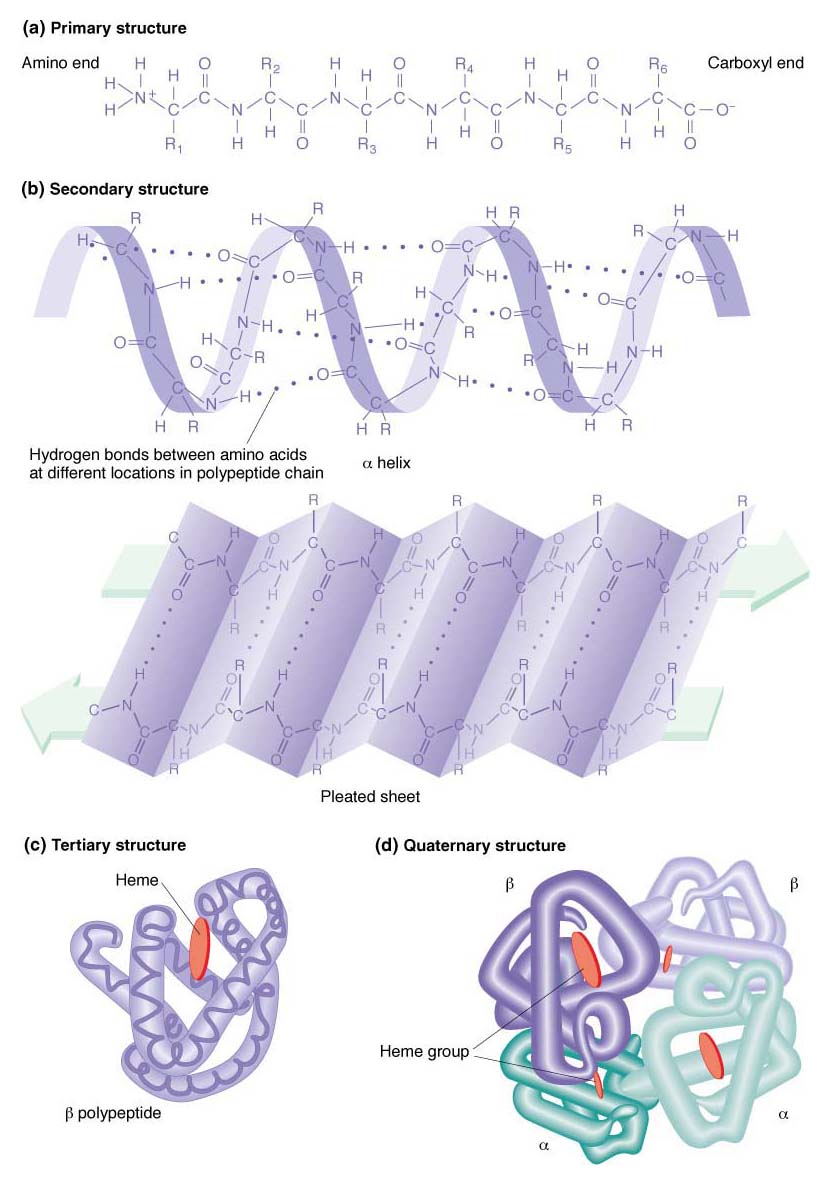
A protein can have four levels of structure. (a) Primary structure. The sequence of amino acids defined by their R groups. (b) Secondary structure. The polypeptide can form a helical structure (an α helix) or a zigzag structure (a β-pleated sheet). The β-pleated sheet has two polypeptide segments arranged in opposite polarity, as indicated by the arrows. (c) Tertiary structure. The heme group is a nonprotein ring structure with an iron atom at its center. (d) Quaternary structure illustrated by hemoglobin, which is composed of four polypeptide subunits: two a subunits and two β subunits.